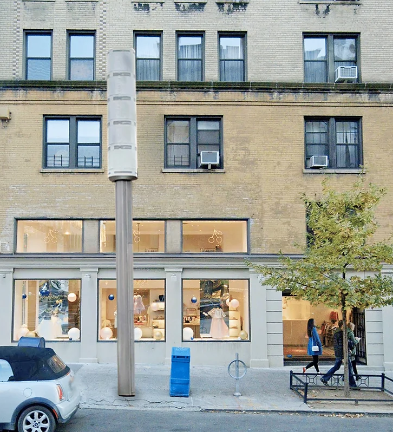CB8 Remains Wary of New 5G Tower Push on UES
After the city’s Office of Technology & Innovation notified the Upper East Side’s Community Board 8 about five new proposed 5G tower locations, with a public comment deadline, the board’s Transportation Committee discussed the matter on Sept. 4. Historical preservation organizations remain the most fervent opponents.

CB8’s Transportation Committee debated the merits of five new proposed Upper East Side locations for Link5G cellular towers on September 4, after NYC’s Office of Technology & Innovation sent them a July 25 letter notifying them of a 90 day public comment period. A majority of the board noted that they were wary of the towers, which put them on the side of local preservation groups opposed to visual changes in the neighborhood. However, a few CB8 members voted in favor of the expanded cellular coverage.
The towers–or “kiosks”–would stand at around 32 ft. tall. The city says that they’ll expand cellular access for communities, or blocks, that don’t have reliable coverage. Four of the proposed Upper East Side kiosks would be located at: 1712 York Avenue, 110 East 88th Street, 650 Madison Avenue, and 510 East 71st Street. The final one would be located across from 500 East 63rd Street.
One such proposed tower was nixed near 87th St. in Carnegie Hill, after the New York State Historic Preservation Office recommended against its installation in February. In addition to the five fresh proposals from July, one additional proposed site has survived on the Upper East Side at 480 Park Avenue, according to a program map. This means that a total of six 5G towers are currently being considered in the neighborhood.
The towers have run into headwinds in other Manhattan neighborhoods, too. CityBridge, which operates LinkNYC, withdrew one from 445 West St. in Greenwich Village last winter–after the Historic Preservation Office expressed similar reservations.
All of the proposed towers will have to undergo something called “Section 106” review under the federal Historical Preservation Act, after the city’s various preservation societies successfully secured such a process back in April. Section 106 essentially allows for community input when historical districts are altered.
Matt Bauer, the president of the Madison Avenue Business Improvement District, was the first public speaker at the CB8 meeting. He was firmly opposed to the 650 Madison Avenue kiosk. “There already is a LinkNYC kiosk at this specific location, a unit that is providing WiFi and phone charging,” he said, although that kiosk is currently a 4G one. Bauer also believed that a new kiosk would be “out of scale” with the rest of the neighborhood.
Lo van der Valk, the president of the nonprofit Carnie Hill Neighbors, also threw the weight of his organization against bringing 5G kiosks to the UES. He had a litany of issues he wanted to raise, including a belief that the 5G towers should be entirely redesigned. He also thinks that the proposed 110 East 88th St. location would obstruct views of Park Ave.
Valk also brought up the Section 106 review process. Until that was completed, Valk said, he believed that the proposed Upper East Side tower sites shouldn’t be considered.
Zeynep Turan, who works for the Friends of the Upper East Side, used her speaking slot to announce that “while [we at Friends] support the city’s stated goals of expanding wireless and cellular services, we don’t believe that the proposed Link5G towers would effectively achieve this objection...we believe that the 32-foot LinkG tower design, as currently proposed, is both out of scale and out of place.”
Then it was time for input from CB8 committee members. Michelle Birnbaum sided with the preservation societies, saying that she opposed the proposed locations because “a couple of them are in historic districts, and the others are within a block of a historic district.” Birnbaum went on to agree with the view that “their visual impact affects the historic district. That’s a very big consideration.”
CB8 member Sebastian Hallum Clarke initially appeared as a lone voice when he said that the towers would amount to “small changes to a streetscape.” He also noted that “we all value being able to be in communication with each other, and being able to have reliable cell service.”
Yet when a vote on whether to signal support for the towers came around, he was joined by CB8 members Paul Krikler and Craig Lader on the “in-favor” side. They were quickly outweighed by nine board members expressing their opposition to the proposed locations, or the towers themselves, with one abstention left over.